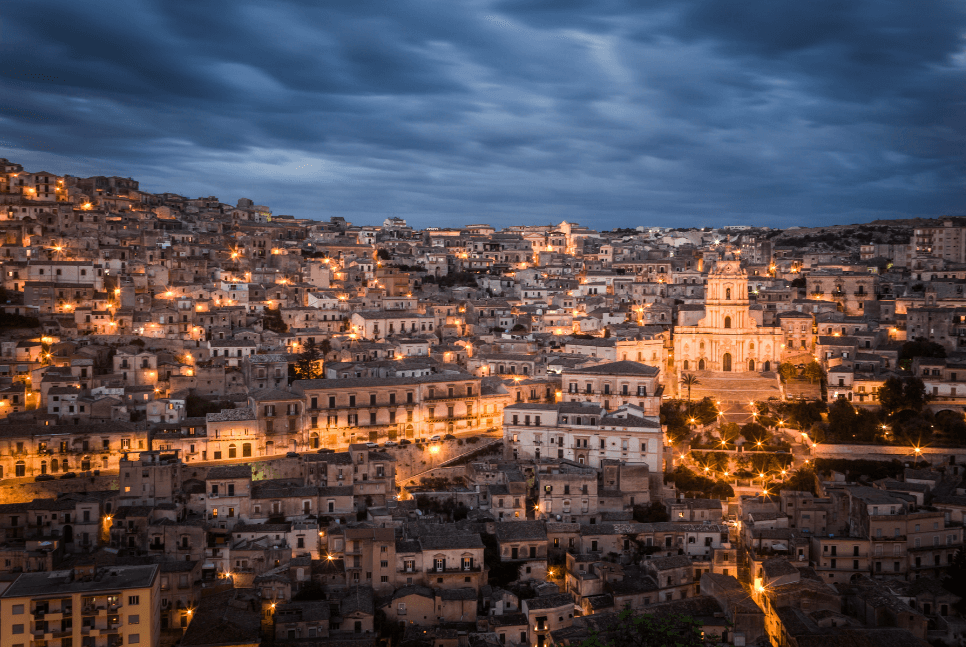
Discovering the Val di Noto between design and baroque architecture
The itinerary in the Val di Noto is a continuous journey to discover emblems of architecture, design, with the addition of good food. It has always been loved by creative people, artists and poets, not just tourists.
Anyone who passes by there cannot forget it, because everything is imprinted in the memory thanks to colors, tastes, smells and the blue sea. Even Goethe, the German writer, once arrived on the Island during his trip to Italy in the late 18th century, said that “Italy without Sicily leaves no image in the spirit. Here is the key to everything.”
Sicily is one of the most sought-after vacation destinations, and among the most visited areas is precisely the Noto Valley, the pearl of Baroque and heritage of Unesco, thanks to eight splendid cities in particular: Caltagirone, Militello in Val di Catania, Catania, Modica, Noto, Palazzolo, Ragusa and Scicli. These, which already existed in the Middle Ages, were rebuilt in part or in full after the 1693 earthquake following the stylistic model of the time.
All architecture, urban planning, and palace decorations constitute the culmination of one of the last periods of
flowering of the Baroque in Europe.
Let us review together the characteristics of places as diverse as public buildings, private homes, and even hotels and entire towns, all emblematic of the character of the area in some way.
The Nicolaci Palace of Villadorata
Designed by Rosaio Gagliardi in 1720, the Nicolaci di Villadorata Palace was completely recovered thanks to the careful restoration carried out by the Soprintendenza ai Beni Culturali under the guidance of architect Giovanna Susan.
The elegance is echoed in the facade, which features a wide portal flanked by two large Ionic columns and topped by a balcony in full Baroque style. Inside, the stately 19th-century Neoclassical staircase leads to the main floor and the various apartments where glimmers of a bygone era survive.
There are vaulted rooms dating back to the late 1700s, where you can have lunch or dinner at the Restaurant
Manna, a true designer bistro carved out of what used to be stables and to artisan workshops. The atmosphere of the interior, like the menu, while presenting a contemporary flair evokes local tradition: Caltagirone ceramics on the walls and lava stones as tables. The design was carefully chosen by designer Gordon Guillaumier to emphasize the strong affiliation with the area.
The house in the Val di Noto: a look among the stones of the past
In this area charged with charm between Norman architecture and Mediterranean scrubland, the construction of a house means highlighting the stone, its history, making it a living, current thing. One example is Studio Giuseppe Guerrieri‘s project, which was completed in 2018 in the rural area of Val di Noto, in a late 19th-century farmhouse. The study enhanced the stone and typical elements of the area.
It is an 800-square-meter property between tool sheds, stables, and added bodies, which leaves little possibility for modification of the original floor plan. The walls nearly a meter thick, the structure punctuated by a series of barrel vaults leads the firm to design custom solutions.
It is precisely because of this limitation to versatility that the rooms on the ground floor that were given a makeover gain significance.
From the front courtyard to the entire interior structure, stone is the dominant element, giving continuity to the design. The pre-existing vaulted roofs and walls of hard limestone were restored and left exposed, leaving out the more deteriorated ones, which were reinforced and finished with lime plaster, while the cross thresholds were made of pitch stone, typical of the area.
The central part winds between rooms starting from the courtyard, living and kitchen area and continuing to the reading area and hallway, continuing to the bedroom and bathroom that opens to the courtyard.
The materials remain the same but, from room to room, the atmosphere changes thanks to the wall coverings, which delineate the transitions, denoting the rooms with different colors, from white to black to green, as if it were a pixelated pattern that manages to enliven the expanse of light colors of the walls and ceiling.
Modica, walk through chocolate and artisans’ quarters
The tour continues for the discovery of Modica, “the city of a hundred churches“, an ancient fiefdom and land of the poet Salvatore Quasimodo, where it is easy to dive into history. All it takes is a glimpse, turning a corner and looking up to discover the history that has passed through the city and made it one of Sicily’s most enchanting locations.
The city is famous for its chocolate, produced through an ancient Mayan recipe and passed down from generation to generation, which can be tasted at the city’s oldest factory, Dolceria Bonajuto. But also in the more recent Ciomod House, a company that stands out for the quality of its products and the experiences it organizes with visitors.
Continuing to stroll, one can encounter the old Jewish quarter Cartellone, where there are workshops of artisans, carpenters, blacksmiths and tailors who pass on the ancient Sicilian arts.
Among the winding alleyways of Modica, one can admire the scenic effect of the staircase of the Cathedral of San Giorgio, the most imposing building in all of southeastern Sicily, enriched by seven gardens, called the Orti di San Giorgio, where one is captivated by the intense smell of jasmine plants. These gardens were inaccessible for quite some time and restored to their former glory by entrepreneur Simone Sabatini, who initiated a major redevelopment process.
Abode of the Crags
Finally, the last example that well shows the nature of the Val di Noto and that we will mention here is really special and refined: the Dimora delle Balze. A building from the 1800s, completely immersed in the green Mediterranean bush, which we have previously discussed in an article you can find by clicking here.
Giulia Nari





